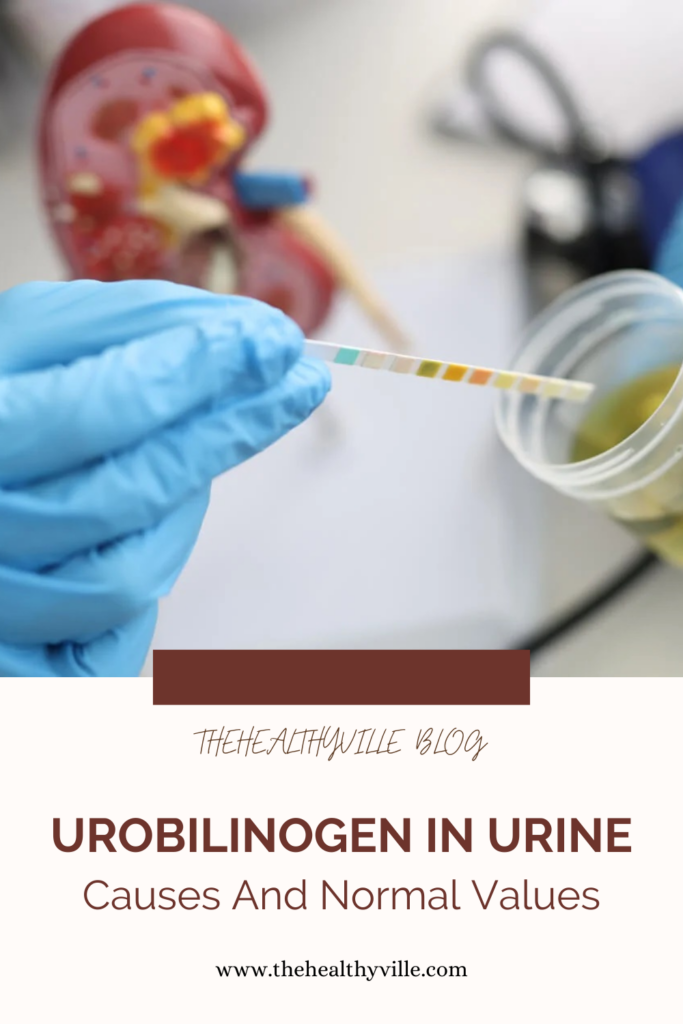Urobilinogen in urine is commonly present. Its elevated values may suggest the presence of a disease, though. Find out everything.
The urine test or urinalysis is the oldest complementary study and one of the most requested in medical practice. The interpretation of the results obtained must consider the context of each patient to avoid diagnostic errors. In this partial exam, the presence of some compounds is determined, among which is urobilinogen, which is responsible for giving the urine a yellowish color.
Usually, the concentration of urobilinogen in urine is evaluated by using dipsticks. These plastic tapes determine various parameters through the visualization of reactive pads arranged for each compound.
The subsequent comparison of the coloration observed in each pad with the scale provided by the manufacturer, allows estimating a relative concentration of the substance in the urine.
What it derives from?
Urobilinogen derives from the metabolism of bilirubin. It is a pigment that the degradation of erythrocytes produces.
In this process, hemoglobin group heme transforms into biliverdin, which converts into bilirubin due to an enzyme. This molecule, known as “unconjugated” or “indirect” bilirubin (BNC), has a configuration that makes it difficult to excrete, so it must bind to albumin, which transports it to the liver.
Upon reaching the liver, BNC enters the cell, where it is conjugated with glucuronic acid to form direct or conjugated bilirubin (BC). The more soluble configuration of this form allows it to be excreted into the intestine through the bile.
In the intestine, the bacterial flora transforms part of the bilirubin into a series of pigments known as “urobilinogens”, whose derivatives impart a brown color to the stool.
The enterohepatic circulation
However, a part of the urobilinogen is reabsorbed in the intestine into the blood vessels, forming the enterohepatic circulation. Because urobilinogen is a fairly soluble pigment, it does not need to be bound to any protein for its transport and is excreted back into the bile.
However, a small percentage remains in general circulation. Upon reaching the kidneys, it is filtered into the urine, which gives it its characteristic amber color.
Normal urobilinogen values
When the determination of urobilinogen in urine is done through test strips, the value obtained is only an estimate. Therefore, this type of analysis is considered qualitative or semi-quantitative.
Similarly, as urobilinogen is a compound that is easily oxidized, its actual concentration can be affected by exposure to light, especially when the sample takes time to be processed.
Commercial houses consider that a concentration lower than 1 mg/dL is within normal limits. However, there are authors who accept that concentrations of up to 3 mg/dL may not be pathological. Although it should always be evaluated in the context of the patient.
On the other hand, the absence of urobilinogen in urinalysis is usually of no clinical importance, due to the easy degradation of this pigment.
Causes of increased urobilinogen in urine
Urobilinogen by itself is not considered a diagnostic parameter of disease, but it has clinical utility in certain conditions. Because it is a pigment produced by the metabolism of bilirubin, the interpretation of an altered result usually includes the analysis of the behavior of both substances.
The main reasons why urobilinogen is elevated are described below.
Liver diseases
Hepatitis causes inflammation and variable damage to liver tissue. The most common cause is infection by one of the hepatitis viruses.
In the acute forms, nonspecific symptoms appear, and then give rise to the icteric phase, which is characterized by the evident yellowish coloration of the skin and mucous membranes. This mucocutaneous pigmentation is the product of the accumulation of bilirubin in the bloodstream.
Elevation of urobilinogen in urine may serve as an early finding of liver injury. For this reason, it is considered that the presence of trivial clinical manifestations together with an altered urine test, in which the urobilinogen is increased, can serve as an early suspicion of liver disease.
Hemolytic anemia
In hemolytic anemias there is an increase in the destruction of erythrocytes. The reasons why this phenomenon appears vary.
As more hemoglobin is degraded, an increase in biliribuna occurs, with a predominance of the indirect fraction (BNC). However, since liver function is unchanged, some of this substance is converted to conjugated bilirubin.
This slight increase in BC allows a greater secretion of the molecule through the bile, reaching the intestinal tract. There, the bacteria metabolize this compound, producing a slightly larger amount of urobilinogen than is normally synthesized. Therefore, this excess urobilinogen is reabsorbed through the enterohepatic circulation, filtering a part into the urine. There will be recorded an increased concentration.
Conditions that decrease urobilinogen in the urine
Although the absence of urobilinogen is not considered suggestive of disease, the correlation with the patient’s clinical manifestations allows this result to be of some use. Especially if the conditions for collecting the urine sample and its processing were optimal.
Therefore, it is not prudent to dismiss the finding of increased urobilinogen. Assuming that it is the oxidation of the compound is not always correct.
Negative urobilinogen in urine may be the expression of an obstructive pathology of the bile ducts. The patient usually also presents with abdominal pain and jaundice (although the latter may be absent).
In addition, stools turn whitish (acolia) due to lack of pigmentation. Urine, for its part, has a dark color (coluria), due to the passage of conjugated bilirubin (BC) through renal filtration.
On the other hand, the use of drugs can also decrease urobilinogen in the urine. Antibiotic therapy with sulfonamides is the main representative of this phenomenon. So it is necessary to inquire about the medications ingested by the patient.
In the same way, general recommendations should be given for the correct collection and transport of the sample to the laboratory. This, in order to avoid alterations in the result.
Don’t forget to SHARE everything about urobilinogen in urine with your friends and family on your social networks!

